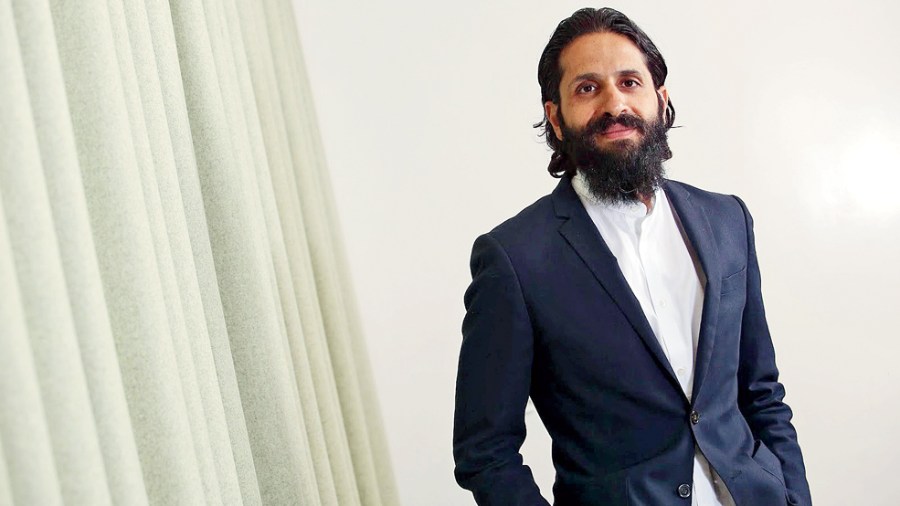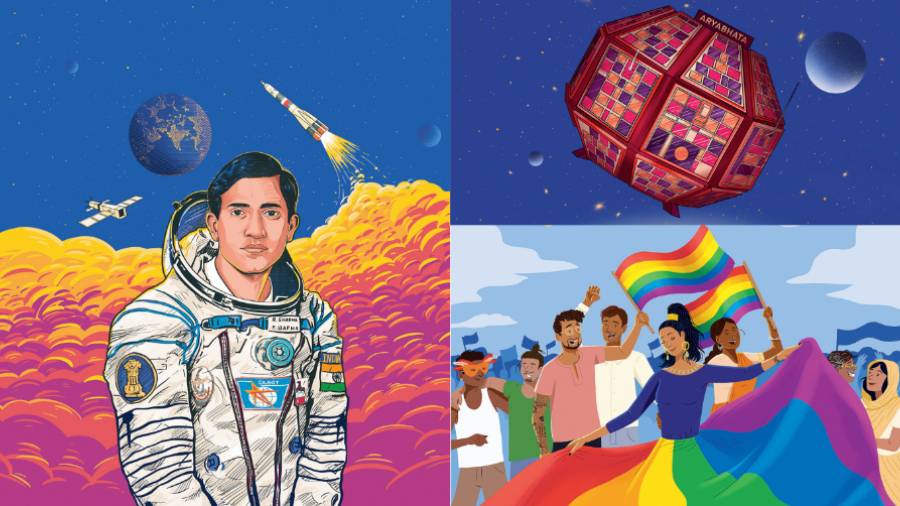The conversation with Amit Sood, director, Google Arts & Culture, begins with the kathi roll. “I forgot the name of the place. It’s a must-have whenever I am in Kolkata.” On hearing Nizam’s, he gets excited. Sood is in charge of one of Google’s finest platforms that every student should experience on their smartphones and anyone interested in storytelling should log in.
This is Google Arts & Culture’s 10th year in India and in a decade the country has become an integral part of the platform. Further, it’s no longer just about art or exhibits, it’s about storytelling. Sood believes that the future expansion of the app needs to delve deep into regional stories. What started as a project that involved a handful of museums now has hundreds of partners across several countries.
In India, Google Arts & Culture partnered with the National Museum and the National Gallery of Modern Art in 2012 and, since then, the platform has worked with more than 100 institutions launching several India-themed exhibitions to share and preserve cultural content and create exciting cultural experiences using cutting-edge technology.
To celebrate India’s 75th Independence Day, there’s something very special on the platform — ‘India ki Udaan’. Here’s more from Sood, who spoke over a video call.
Where does India fit in on the Google Arts and Culture map?
It’s going to be nearly 10 years of us being committed to the country. I think India is one of the countries that benefits significantly from ideas like this, which is to essentially create a level playing field for cultural experiences with a global context, both for domestic and international users.
Our journey has involved bringing out stories that can be put on a platform where you also have stories from many countries, artists whom you may (or may not) recognise. It’s about creating sort of a merger where there’s no kind of physical restrictions to access incredible diversity and incredible amount of rich storytelling that our country can offer. With that, of course, we started our journey with art from various museums. Very quickly we realised that if we were to go into Indian cultural storytelling, art is one part of it. We will need to broaden the definition of art and culture. And that was amazing because that’s how we started getting into projects like ‘Wonders of India’ with ASI, ‘Indian Railways — Lifeline of a Nation’ with the ministry of railways, ‘Crafted for India’, ‘Women in India: Unheard Stories’ and ‘A brief history of vaccination’. A lot of people were a bit shocked, saying, ‘What is Google Arts & Culture doing with trains?’
India has actually led the way for us globally, in teaching us that culture means different things to different people, and having an incredibly strong identity in our country about rail journeys… and what that means for people… it’s part of our culture. I think bringing that to the world is very important. Then the more recent project on the history of vaccinations… it was a timely project once again, talking about the need for historic storytelling, rather than just art-based storytelling.
And what’s been the biggest success?
The biggest success for me has been the fact that we are still working with our first partner, the Archaeological Survey of India, even after 10 years. We are still working with the original partners, we are still engaged with them. This type of initiative cannot survive without deep partnership support.
Your new digital exhibition celebrates India’s 75th Independence Day. What are we looking at?
We were not looking for flash-in-the-pan kind of ideas, which is like doing one thing and then forgetting about it. We wanted to create a year-long project… kind of drumbeat a momentum of ideas. We have lots of other stuff, which we will bring to the collection in the next six to 12 months. Some of them are just whimsical, beautiful, interactive experiences that will make you smile and teach you something. Some of them are a bit more about learning and education. And some of them are more about recognising individuals who have contributed to a moment.
This is the first phase of the collection and I would say we need more stories in the future. We’re starting with some stories but it is not a definitive list. The initiative has been made possible by partners like National Gallery of Modern Art (NGMA). We went into the archives, we went into the content. Now, most of these stories are available already on the Internet. You can just Google some of the names, like, ‘Who is Milkha Singh?’ But what you don’t get are artists from India, illustrating these stories in a very unique way, making it a little bit more engaging. We have worked with around 10-11 artists.
This democratic way of getting illustrators to marry content from museums, and then create these powerful stories is what I really like about this initiative. And I think it’s just the start for us. It’s a small drop in the storytelling of India’s Independence.
Looking at the bigger picture, what kind of impact Google Arts and Culture has had on students and beyond?
India is one of our biggest user countries. We love consuming arts and culture. I think the biggest difference involves giving people a desire to embrace topics that may have been considered elite or for a certain segment of society. It democratises the concept. I was in India a couple of months ago and had to attend a medical emergency. While I was in the waiting room, some people asked me about my professional bearings. I just opened up the app and started showing them stuff. And they were like: ‘Oh my God, I didn’t realise you could get art like this on your application, I thought you have to go to a fancy museum.’ So you don’t have to go to any fancy museum, the entry barrier has changed significantly. But there’s more we can do, we are still very city centric, where ironically arts and culture kind of gravitate. There are so many more stories. I think crafts in India really took us out of cities and into regions. Regional storytelling would probably be my next big ambition or wish.
A decade ago it must have been tough to make museums see the benefits of the platform. Has it become easier to get them on board?
I don’t think it should be easy, otherwise we become lazy. Our partners are still pushing us. In India, I would say the conversations are now more open. The ministry of culture and the ministry of tourism in India are challenging us in great and good ways. If you have a conversation with the ministry of tourism, their ideas are, at times, like, wow.
What got you interested in the arts?
I guess it was the first “forced” trip to a museum. When you’re a kid, the school takes you to the museum. It’s a bunk from class. I don’t remember the place, it was either Salar Jung Museum or something in Mumbai. But things changed when I started visiting museums in the West and realised they were very accessible. Most of them, at least in the UK, were free. At first I was going there more for the facilities, like the cafe or that kind of stuff. I didn’t gravitate towards it until it became naturally important to me. I remember going to the Tate. You see an exhibition and wonder about the artist and what you are seeing in front of you, creating an emotion in you.
Where do you want to see Google Arts and Culture in the future?
For India, my ambition is to unearth stories that have been lost due to lack of digitisation, or lack of curatorial resources. If you look at Kolkata and go beyond the great institutions, there are the printmakers. There is information sitting in some kind of archival room gathering dust because people either don’t see the value or don’t know what to do with it. The other part of the ambition involves getting into more schools and classrooms.

File picture of Amit Sood —director, Google Arts & Culture
